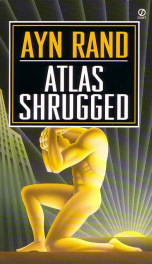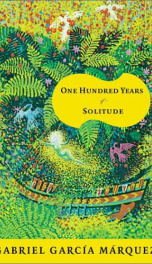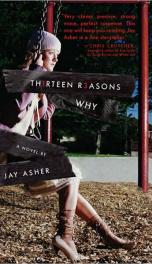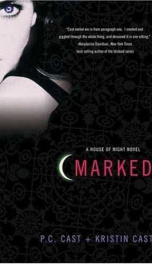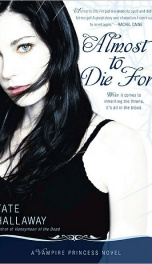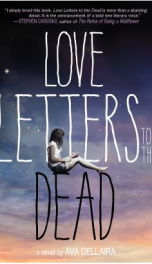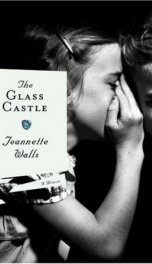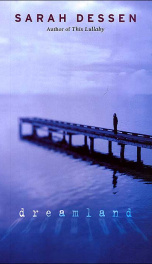Rand Ayn

Ayn Rand (pronounced /ˈaɪn ˈrænd/; born Alisa Zinov'yevna Rosenbaum; February 2 [O.S. January 20] 1905 – March 6, 1982), was a Russian-American novelist, philosopher,[1] playwright, and screenwriter. She is known for her two best-selling novels and for developing a philosophical system she called Objectivism. Born and educated in Russia, Rand emigrated to the United States in 1926. She worked as a screenwriter in Hollywood and had a play produced on Broadway in 1935-1936. She first achieved fame with her novel The Fountainhead, published in 1943,[2] which in 1957 was followed by her best-known work, the philosophical novel Atlas Shrugged. Rand's political views, reflected in both her fiction and her theoretical work, emphasize individual rights (including property rights) and laissez-faire capitalism, enforced by a constitutionally-limited government. She was a fierce opponent of all forms of collectivism and statism,[3][4] including fascism, communism, and the welfare state,[5] and promoted ethical egoism while condemning altruism.[6] She considered reason to be the only means of acquiring knowledge and the most important aspect of her philosophy,[7] stating, "I am not primarily an advocate of capitalism, but of egoism; and I am not primarily an advocate of egoism, but of reason. If one recognizes the supremacy of reason and applies it consistently, all the rest follows."[8] Rand was born Alisa Zinov'yevna Rosenbaum (Russian: Алиса Зиновьевна Розенбаум) in 1905, into a middle-class family living in Saint Petersburg. She was the eldest of the three daughters (Alisa, Natasha, and Nora) of Zinovy Zacharovich Rosenbaum and Anna Borisovna Rosenbaum, largely non-observant Jews. Her father was educated as a chemist and became a successful pharmacist, eventually owning his own pharmacy and the building in which it was located.[9] Rand was twelve at the time of the Russian revolution of 1917. Opposed to the Tsar, Rand's sympathies were with Alexander Kerensky. Rand's family life was disrupted by the rise of the Bolshevik party. Her father's pharmacy was confiscated by the Soviets, and the family fled to the Crimea which was initially under the control of the White Army. She later recalled that while in high school she determined that she was an atheist and that she valued reason and intellect. She graduated from high school in the Crimea and briefly held a job teaching Red Army soldiers to read. She found she enjoyed that work very much, the illiterate soldiers being eager to learn and respectful of her. At sixteen, Rand returned with her family to Saint Petersburg.[10][11] She enrolled at the University of Petrograd, where she studied in the department of social pedagogy, majoring in history.[12] At university she was introduced to the writings of Aristotle and Plato, who would form two of the greatest influences and counter-influences respectively on her thought.[12][13] A third figure whose philosophical works she studied heavily was Friedrich Nietzsche.[14] Her formal study of philosophy amounted to only a few courses, and outside of these three philosophers, her study of key figures was limited to excerpts and summaries.[15] Of the writers she read at this time, Victor Hugo, Edmond Rostand, Friedrich Schiller, and Fyodor Dostoevsky became her perennial favorites.[16] Along with a number of other non-Communist students, Rand was purged from the university shortly before completing. However, after complaints from a group of visiting foreign scientists, the Communists relented and allowed many of the expelled students to complete their work and graduate,[17] which Rand did in October 1924.[12] She subsequently studied for a year at the State Technicum for Screen Arts.[18] In the fall of 1925, she was granted a visa to visit American relatives. She left Russia on January 17, 1926, and arrived in the United States on February 19, entering by ship through New York City.[19] After a brief stay with her relatives in Chicago, she resolved never to return to the Soviet Union, and set out for Hollywood to become a screenwriter. While still in Russia she had decided her professional surname for writing would be Rand,[20] possibly as a Cyrillic contraction of her birth surname,[21] and she adopted the first name Ayn, possibly from a Finnish name.[22] Initially, she struggled in Hollywood and took odd jobs to pay her basic living expenses. A chance meeting with famed director Cecil B. DeMille led to a job as an extra in his film, The King of Kings, and to subsequent work as a junior screenwriter.[23] While working on The King of Kings, she intentionally bumped into an aspiring young actor, Frank O'Connor, who caught her eye. The two married on April 15, 1929. Rand became an American citizen in 1931. Taking various jobs during the 1930s to support her writing, for a time Rand worked as the head of the costume department at RKO Studios.[24] She made attempts to bring her parents and sisters to the United States, but they were unable to get permission to emigrate.[25] Rand's first literary success came with the sale of her screenplay Red Pawn in 1932 to Universal Studios. Josef Von Sternberg considered it for Marlene Dietrich, but anti-Soviet themes were unpopular at the time, and the project came to nothing.[27] This was followed by the courtroom drama Night of January 16th, first produced in Hollywood in 1934, and then successfully reopened on Broadway in 1935. Each night the "jury" was selected from members of the audience, and one of the two different endings, depending on the jury's "verdict," would then be performed.[28] In 1941, Paramount Pictures produced a movie version of the play. She did not participate in the production and was highly critical of the result.[29] Her first novel, the semi-autobiographical We the Living, was published in 1936 by Macmillan. Set in Communist Russia, it focused on the struggle between the individual and the state. In the foreword to the novel, Rand stated that We the Living "is as near to an autobiography as I will ever write. It is not an autobiography in the literal, but only in the intellectual sense. The plot is invented, the background is not..."[30] Without Rand's knowledge or permission, We the Living was made into a pair of films, Noi vivi and Addio, Kira in Italy in 1942. Rediscovered in the 1960s, these films were re-edited into a new version which was approved by Rand and re-released as We the Living in 1986.[31] The novella Anthem was published in England in 1938 and in America seven years later. It presents a vision of a dystopian future world in which collectivism has triumphed to such an extent that even the word "I" has vanished from the language and from humanity's memory. During the 1940s, Rand became involved in political activism. Both she and her husband worked full time in volunteer positions for the 1940 Presidential campaign of Republican Wendell Willkie. This work led to Rand's first public speaking experiences, including fielding the sometimes hostile questions from the audience "following pro-Willkie newsreels at a Union square movie theater" in New York City, an experience she greatly enjoyed.[32] This activity also brought her into contact with other intellectuals sympathetic to free-market capitalism. She became friends with journalist Henry Hazlitt and his wife, and Hazlitt introduced her to the Austrian School economist Ludwig von Mises. Both men expressed an admiration for Rand, and despite her philosophical differences with them, Rand strongly endorsed the writings of both men throughout her career.[33] Rand's first major success as a writer came with The Fountainhead in 1943, a romantic drama and philosophical novel that she wrote over a period of seven years.[34] The novel centers on an uncompromising young architect named Howard Roark, and his struggle against what Rand described as "second-handers" — those who attempt to live through others, placing others above self. It was rejected by twelve publishers before finally being accepted by the Bobbs-Merrill Company on the insistence of editor Archibald Ogden, who threatened to quit if his employer did not publish it.[35] The Fountainhead eventually became a worldwide success, bringing Rand fame and financial security. According to the Ayn Rand Institute, by April 2008 the novel had sold over 6.5 million copies.[36] In 1943, Rand returned to Hollywood to write the screenplay for a film version of The Fountainhead for Warner Brothers, and the following year she and her husband purchased a home designed by modernist Richard Neutra and an adjoining ranch. There, Rand entertained figures such as Hazlitt, Morrie Ryskind, Janet Gaynor, Gilbert Adrian and Leonard Read. Finishing her work on that screenplay, she was hired by producer Hal Wallis as a screenwriter and script-doctor, and her work for Wallis included the Oscar-nominated Love Letters and You Came Along, along with research for a screenplay based on the development of the atomic bomb.[37] This role gave Rand time to work on other projects, including the publication of her first work of non-fiction, an essay titled "The Only Path to Tomorrow," in the January 1944 edition of Reader's Digest magazine.[38] During this period Rand also outlined and took extensive notes for a non-fiction treatment of her philosophy.[39] During this period Rand developed a relationship with libertarian writer Isabel Paterson. The two women became friends and philosophical sparring-partners, and Rand is reported to have questioned the well-informed Paterson about American history and politics long into the night during their numerous meetings. Later, the two women had a falling out after what Rand saw as Paterson's bitter and insensitive comments during one of her Hollywood parties. Paterson's influence on Rand's later political theories has been a matter of ongoing debate, but Paterson biographer Stephen D. Cox credits Rand's public advocacy with keeping her old friend's political work The God of the Machine in print for many years, despite their previous break.[40] In 1947, during the Second Red Scare, Rand testified as a "friendly witness" before the United States House Un-American Activities Committee. Her testimony regarded the disparity between her personal experiences in the Soviet Union and the portrayal of it in the 1944 film Song of Russia.[41] Rand argued that the film grossly misrepresented the socioeconomic conditions in the Soviet Union and portrayed life in the USSR as being much better and happier than it actually was.[42] When asked about her feelings on the effectiveness of the investigations after the hearings, Rand described the process as "futile".[43]
do you like this author?
What readers are saying
What do you think? Write your own comment on this book!
write a commentWhat readers are saying
What do you think? Write your own comment on this author!
write a commentBook list

The Fountainhead
Series:
Unknown
Year:
Unknown
Raiting:
4.5/5
When The Fountainhead was first published, Ayn Rand's daringly original literary vision and her groundbreaking philosophy, Objectivism, won immediate worldwide interest and acclaim. This instant classic is the story of an intransigent young architect, his violent battle against conventional standards, and his explosive love affair with a beautiful woman who struggles to defeat him. This edition contains a special Afterword by Rand's literary executor, Leonard Peikoff which includes excerpts from Ayn Rand's own notes on the making of The Fountainhead.
Show more
add to favoritesadd In favorites
Book list

The Fountainhead
Series:
Unknown
Year:
Unknown
Raiting:
4.5/5
When The Fountainhead was first published, Ayn Rand's daringly original literary vision and her groundbreaking philosophy, Objectivism, won immediate worldwide interest and acclaim. This instant classic is the story of an intransigent young architect, his violent battle against conventional standards, and his explosive love affair with a beautiful woman who struggles to defeat him. This edition contains a special Afterword by Rand's literary executor, Leonard Peikoff which includes excerpts from Ayn Rand's own notes on the making of The Fountainhead.
Show more
add to favoritesadd In favorites
What readers are saying
What do you think? Write your own comment on this author!
write a commentif you like Rand Ayn try:
readers also enjoyed
What readers are saying
What do you think? Write your own comment on this author!
write a commentif you like Rand Ayn try:
readers also enjoyed
Do you want to exchange books? It’s EASY!
Get registered and find other users who want to give their favourite books to good hands!

